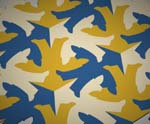
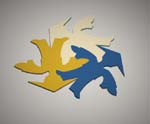
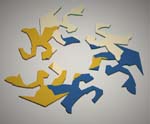
Figure 31
Figure 32
Figure 33
An unexpected consequence of combining different types of tiling-lattices is that we can use some of these methods to transform one of Escher's tilings to a different one in his collection. In our first example (Figure 31) we start with Escher's tiling of Chinese men (regular division drawing number 4, [4, p. 118]). From this tiling a set of three interlocked tiles is carefully dissected into three equal pieces, following the tiling-lattice of another Escher drawing (Figure 32). Now, after pulling apart the pieces (Figure 33) and turning the pieces over (Figure 34), we can reassemble them, and behold, the three Chinese men have changed into three lizards (Figure 35), fitting exactly into Escher’s regular division drawing number 25 (Figure 36) [4, p. 135].
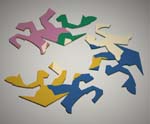
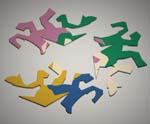
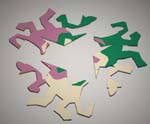
Figure 33a
Figure 33b
Figure 34
When you want to make this kind of transformation, you first have to choose both tilings carefully. The tiling of Chinese men has three different kinds of 3-fold rotation points: where three heads meet, where three left hands meet, and where three right hands meet. The lizard tiling also has three different kinds of 3-fold rotation points. When we want to combine both tilings (in order to turn one into the other), it is important that in superimposing the tilings, these symmetry-points are matched exactly. This can be achieved in six different ways, one of which is shown in Figure 37.
The next step is to choose a cluster of three Chinese men that meet at a 3-fold rotation point and see whether we can use the outlines of the lizard-tiling as cutting lines from the center 3-fold point to the boundary of the cluster in such a way that the number of pieces after cutting is small. On each of the six possible superimposed tilings, there are three different ways to choose such a cluster of three Chinese men, yet only the one in Figure 32 can be used for a dissection into no more than three pieces using the contour lines of the lizards.
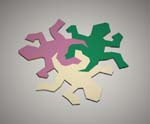
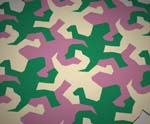
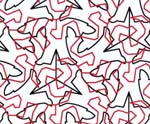
Figure 35
Figure 36
Figure 37